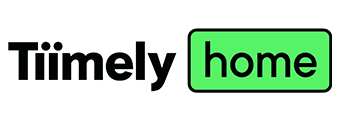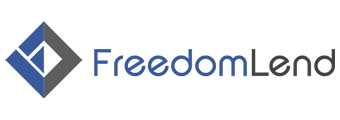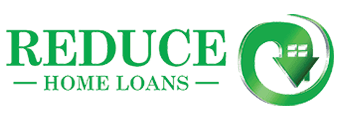
Non-bank lenders are becoming a popular option for many borrowers looking to refinance their home loans but are they any better than traditional banks?
Salvest managing director Anthony Ferrero said non-bank lenders gained popularity in recent years as they offer alternative financing options to those borrowers who might not fulfill the strict criteria established by traditional banks.
“AUSTRAC expects this to grow by almost 10% a year through to 2024 with non-bank lenders offers greater flexibility, and better long-term outcomes for partners,” he told Your Mortgage.
Advantages of non-bank lenders
Mr Ferrero said non-bank lenders provide more flexible lending terms, quicker approvals, and a willingness to consider borrowers who might be deemed higher risk by traditional lenders.
“Non-bank lenders offer several advantages to home loan borrowers compared to traditional banks during interest rate hikes,” he said.
Here are some of the advantages of non-bank lenders during rate hikes:
Flexibility in underwriting
Mr Ferrero said non-bank lenders often have more flexible underwriting processes, as they can take a more holistic approach to assess a borrower’s creditworthiness and ability to repay.
“They consider factors beyond strict financial metrics, benefiting borrowers who may not meet the stringent criteria of banks,” he said.
Competitive pricing
Operating in a more competitive lending market, non-bank lenders may adjust their pricing more quickly in response to interest rate changes.
Quick approval
In times of interest rate hikes, borrowers may need to act promptly to secure advantageous rates or finalise their loan terms — non-banks can help them.
Non-bank lenders frequently employ efficient processes and leverage technology to accelerate the approval and funding of loans.
Specialised loan products
Non-bank lenders often provide specialised loan products that are customised to meet the specific needs of borrowers.
These include offerings may include variable rate home loans with rate caps, hybrid loans that combine fixed and variable rates, or alternative loan options designed for self-employed individuals or borrowers with unique financial circumstances.
What to consider when applying to a non-bank lender
Mr Ferrero shared several factors that should be considered when applying for a home loan with a non-bank lender:
Reputation and credibility
It is important to conduct thorough research and evaluate the reputation and credibility of a lender.
“Look for reviews, testimonials, and feedback from other borrowers. Check if the lender is licensed and regulated by the appropriate authorities,” Mr Ferrero said.
Interest rates and fees
Due to the elevated risks they undertake, non-bank lenders frequently apply higher interest rates and fees compared to traditional banks.
“It's important to carefully evaluate the interest rates, fees, and any additional costs associated with the loan — compare these rates with other lenders to ensure you're getting a fair deal,” Mr Ferrero said.
It is also important for borrowers to consider the impact of these costs on their overall financial situation and ability to repay the loan.
Loan terms and conditions
Mr Ferrero said borrowers must also ensure that they review the loan terms and conditions presented by a non-bank lender.
“Understand the repayment schedule, including the duration of the loan, interest rate adjustments, and any penalties or fees for early repayment — ensure that the loan terms align with your financial goals and capabilities.”
Transparency, disclosure, and customer support
A reputable non-bank lender should prioritize transparency and provide clear information about all aspects of the loan.
Mr Ferrero said they should openly communicate details such as interest rates, fees, repayment terms, potential penalties, and any other relevant terms and conditions.
“Borrowers should also evaluate the customer service and support offered by the non-bank lender. Consider their responsiveness, accessibility, and willingness to address your inquiries or concerns.”
Buying a home or looking to refinance? The table below features home loans with some of the lowest interest rates on the market from non-bank lenders.
| Lender | Home Loan | Interest Rate | Comparison Rate* | Monthly Repayment | Repayment type | Rate Type | Offset | Redraw | Ongoing Fees | Upfront Fees | Max LVR | Lump Sum Repayment | Additional Repayments | Split Loan Option | Tags | Row Tags | Features | Link | Compare | Promoted Product | Disclosure |
|---|---|---|---|---|---|---|---|---|---|---|---|---|---|---|---|---|---|---|---|---|---|
5.79% p.a. | 5.83% p.a. | $2,931 | Principal & Interest | Variable | $0 | $530 | 90% |
| Promoted | Disclosure | |||||||||||
5.79% p.a. | 5.80% p.a. | $2,931 | Principal & Interest | Variable | $0 | $0 | 90% | ||||||||||||||
5.74% p.a. | 5.65% p.a. | $2,915 | Principal & Interest | Variable | $0 | $0 | 80% |
| Disclosure | ||||||||||||
5.74% p.a. | 6.19% p.a. | $2,915 | Principal & Interest | Variable | $0 | $530 | 90% |
| Disclosure | ||||||||||||
6.15% p.a. | 6.18% p.a. | $3,046 | Principal & Interest | Variable | $0 | $0 | 80% | ||||||||||||||
5.99% p.a. | 5.99% p.a. | $2,995 | Principal & Interest | Variable | $0 | $0 | 50% | ||||||||||||||
6.14% p.a. | 6.14% p.a. | $3,043 | Principal & Interest | Variable | $0 | $0 | 60% | ||||||||||||||
6.34% p.a. | 6.62% p.a. | $3,108 | Principal & Interest | Variable | $295 | $0 | 95% | ||||||||||||||
6.99% p.a. | 7.11% p.a. | $3,323 | Principal & Interest | Variable | $0 | $545 | 80% | ||||||||||||||
6.64% p.a. | 6.82% p.a. | $3,207 | Principal & Interest | Variable | $15 | $1,325 | 70% | ||||||||||||||
5.69% p.a. | 5.95% p.a. | $2,899 | Principal & Interest | Fixed | $0 | $530 | 90% |
| Promoted | Disclosure |
-
Photo by @gettyimages on Canva.
Collections: Non-bank lender First Home Buyer Buying a home












Share